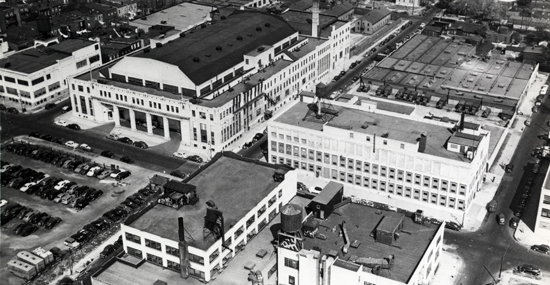
Museum History
Since its opening in 1988, Museum of the Moving Image has been recognized as a major, internationally reputed institution and the only museum in the United States dedicated to exploring the art, history, and technology of the moving image.
The Museum occupies one of the thirteen buildings that comprised the former Astoria studio complex. Originally built by Famous Players-Lasky—known as Paramount after 1927—as their East Coast production facility in 1920, the studio was the site of hundreds of silent and early sound era film productions. The studio was taken over in 1942 by the U.S. Army to produce training films for WWII soldiers and renamed the Signal Corps Photographic Center. Following the Army's departure in 1970, the site fell into disrepair. Through the efforts of a consortium of New York City and federal government representatives, union officials and other industry professionals, the Astoria Motion Picture and Television Center Foundation was established in 1977 to restore the Astoria studio complex to productive use. In 1978, the Foundation successfully returned the studio to feature film production, and obtained listing of the site on the National Register of Historic Places.
In 1980, real estate developer George Kaufman was selected to operate the studio facilities. Shortly after, Rochelle Slovin was appointed Executive Director of the Foundation. Under her leadership, the Foundation’s Board of Directors committed to create a museum of film and television at the complex. In 1982, the City of New York set aside one of the original studio buildings for the proposed museum.
In 1985, the Foundation was reincorporated as the American Museum of the Moving Image (now Museum of the Moving Image). The Museum opened to the public in 1988 in a building renovated by Gwathmey Siegel & Associates Architects.
On February 27, 2008, the inauguration of the Museum’s $67 million expansion and renovation was held and construction began.
On January 15, 2011, the transformed Museum opened its doors to the public, featuring a stunning, modern, and versatile building by architect Thomas Leeser.
The Museum is now able to present more screenings and a wider range of programming in the 267-seat Sumner M. Redstone Theater and the 68-seat Celeste and Armand Bartos Screening Room. The core exhibition, Behind the Screen, has received a complete technological and artistic overhaul. A major new gallery has been created for changing exhibitions, and new spaces have been added for the presentation of video art.
The Ann and Andrew Tisch Education Center enables the Museum to serve twice as many students, and to offer a wide new range of production workshops, along with the tours and screenings that serve tens of thousands of students each year.
The new George S. Kaufman Courtyard offers visitors a comfortable outdoor space to relax during a visit and enjoy a unique view of the Museum’s rear facade. In the warm weather months, it serves as a venue for screenings, live events, exhibitions, and artist installations. It also provides direct access to the Ann and Andrew Tisch Education Center, allowing the Museum to better serve the 50,000 students who visit each year.
The Hearst Lobby, William Fox Amphitheater, Moving Image Shop, and Moving Image Café are all part of a dramatic transformation that now guarantees the Museum is at once an international center for the appreciation and study of the moving image, and an inviting, user-friendly destination for local museum-goers and tourists from around the world.
MoMI's renovation and expansion received the NYC Mayor's Award for Excellence in Design in 2011, and the Museum served as the host venue for the awards ceremony.
Architectural Team: Leeser Architecture, New York
Founder and Principal: Thomas Leeser
Project Manager: David Linehan
Design Team: Simon Arnold, Kate Burke, Sofia Castricone, Henry Grosman, Joseph Haberl
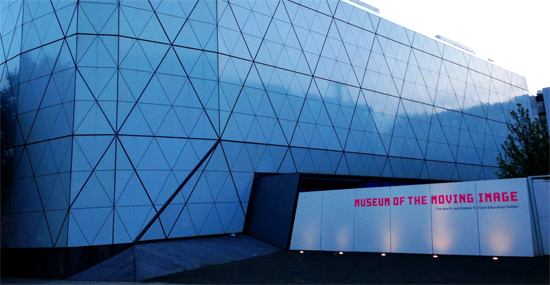
Entrance to the Ann and Andrew Tisch Education Center
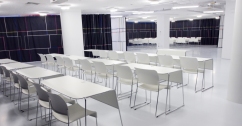
Ann and Andrew Tisch Education Center
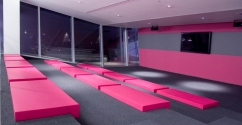
William Fox Amphitheater

George S. Kaufman Courtyard

Hearst Lobby
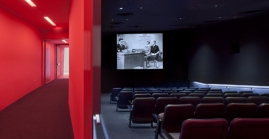
Celeste and Armand Bartos Screening Room

